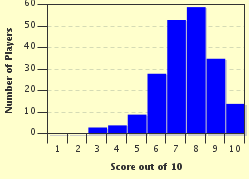Quiz Answer Key and Fun Facts
1. This instrument was fun to play - it sounded like little bells! My teacher said that its name is German and means 'bell play'. What is it called?
2. I felt like a rock star with this instrument in my hands! My teacher told me that it is very popular in Hawaiian music. What is its name?
3. When my teacher told me that one nickname for this instrument was 'sweet potato', I didn't believe him. What is this ancient wind instrument called?
4. My teacher had some of his older students demonstrate these hand bells for us, and they showed us a few different ways to play them. Which one of the methods below is NOT a way to play hand bells?
5. When I played this instrument, it made a funny, nasal-y sound. My teacher explained how it worked, but what do you have to do to make a sound on the kazoo?
6. My teacher said that we will get to learn the soprano recorder (the small one in the picture), but he also showed us a smaller recorder that was just half the length of the soprano. Its name means 'quite small' in German. What is it called?
7. My teacher told us all about the neat history behind steel pans. They were first made in Mexico after the War of Independence.
8. My teacher called this a tin whistle... it reminded me a bit of the recorder. He also said that it had a bunch of different names, depending on where you came from. Which of these is NOT another name for a tin whistle?
9. I actually have one of these at home, so I already knew all about it when my teacher showed one to us in class. He called it a harmonica, but my daddy calls it something else. What other name does it have?
10. The last instrument we got to play with before class ended was the xylophone. My teacher says it is called that because 'xylo' means wood. What language does that come from?
Source: Author
reedy
This quiz was reviewed by FunTrivia editor
NatalieW before going online.
Any errors found in FunTrivia content are routinely corrected through our feedback system.

